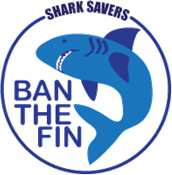Scuba Diving Mexico
Sea of Cortez
SEASONS:
January - March: Gray whale calving season; Humpback whale migration, Blue whales in Sea of Cortez
End of April - July: Mobula manta breeding season, Sea of Cortez, Orcas
July - November: Great white shark diving, Isla de Guadalupe
September - December: Magdalena Bay, Striped Marline sardine run, Pacific
October - April: LaPaz whaleshark season, Sea of Cortez
The Sea of Cortez has been called “The Worlds Aquarium” and “The Worlds Greatest Fish Trap”. The Sea of Cortez is close to five million years old, making it the youngest of all the seas in the world. This body of water separates the Baja California Peninsula from the Mexican mainland. This narrow sea is home to a unique and rich ecosystem. There are three general types of shores found here, they include a rocky shore, sandy beach and tidal flat. There are 37 islands in the Sea of Cortez. The largest two are Isla Angel de la Guarda and Tiburon Island.
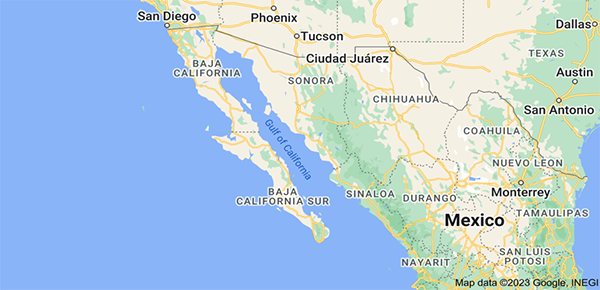
Mobula Manta aggregations, Orca’s. Breeding grounds for whales, dolphins, sea lions and whale sharks...
The Mobula Munkiana, also known as Munk's Devil Ray, or Manta Cubana in Mexico, is one of the most magnificent species to swim with.
These Mobula rays have a bi-annual migration in and out of the Sea of Cortez in which they pass through Cabo San Lucas, and put on quite a spectacle. The Mobula congregate into huge schools, often in the thousands, traveling closely along the coast. They like to stay close to the surface of the water allowing for people of all comfort levels to swim, snorkel & free dive easily among them.
Swimming with the mobula is nothing short of amazing. The Mobulas move effortlessly through the water in unison. Individuals often leap into the air, landing with a crude slap on the surface before repositioning themselves within the group.
While the Mobula stay around the same areas all day, they tend to be most active and closer to the surface in the mornings and afternoons. There is very little known about their unique behavior, Biologists continue to hypothesize the significance of the mobulas unique acrobatic skills both in and out of the water. We are involved in logging the mobulas sightings in order to better understand their unique physical and social behaviors. Our goal is to better understand these animals so we can better protect them and their environments.
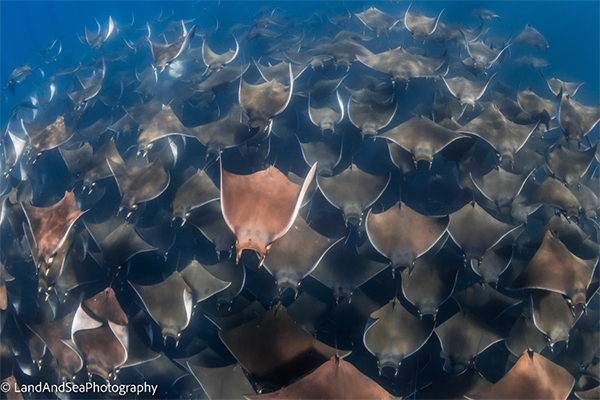
And where there are Mobulas there are often Orcas! They love to snack on Mobulas! When we offer our Mobula trips from April through end of July there is always that chance to see Orcas!
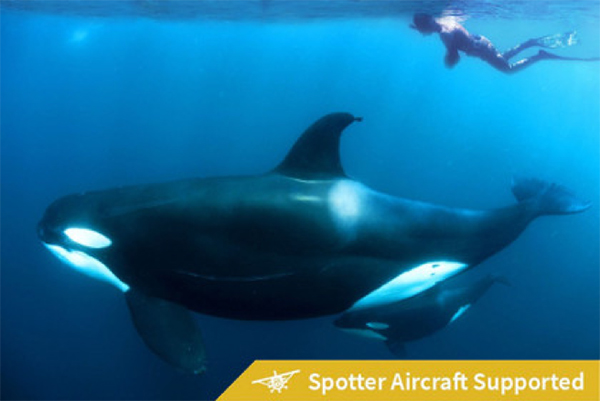
Cabo Pulmo:
UNESCO World heritage site. Year-round diving. Best vis August through December and warmest temperatures.
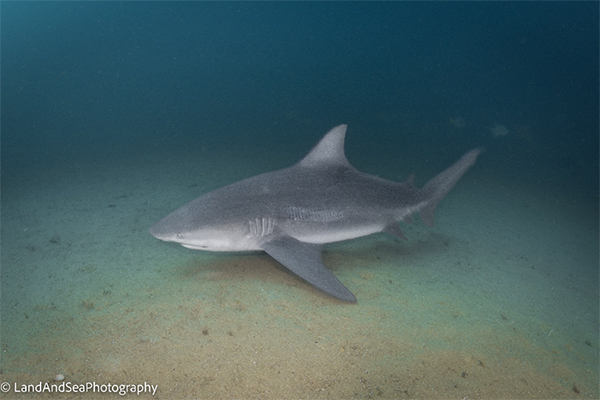
Cabo Pulmo National Marine Park, part of the Islands and Protected Areas of the Gulf of California (Mexico) World Heritage site.
What’s special about Cabo Pulmo is that the waters are incredibly rich in sea life. So rich, in fact, that Jacques Cousteau described the Cabo Pulmo marine park as “the aquarium of the world.”
Bull sharks are a huge favorite among divers and can be seen on several dive sites.
On some sites thousands and thousands of Big Eye Trevally Jacks surround you and create a tornado if you are lucky to witness that!
Other sites such as El Vencedor the wreck offer exquisite marine life:
- Common encounters: Bull Sharks, Groupers, Snappers, Turtles, Sting Rays, Garden, Panamic Green Moray, Schools of Yellowtail Snappers, Schools of Grunts, Schools of Sardines
- Seasonal encounters: Large numbers of Bull Sharks
- Possible encounters: Tiger Sharks
This area is by far one of my favorite places to dive in the world!!
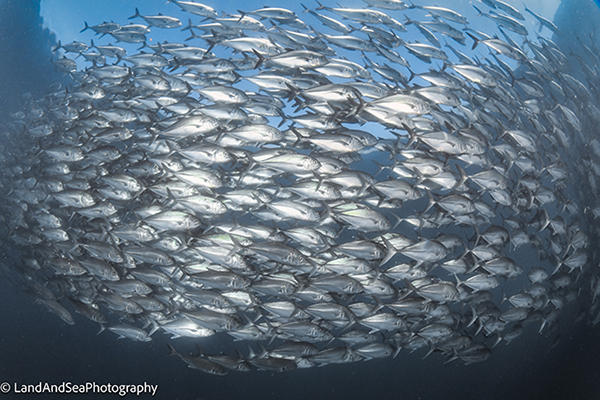
Cabo Pulmo, Sea of Cortez ~ September 13 2022 Trip Report
La Paz:
A wonderful jumping off point for so many marine excursions different times of the year.
Scuba diving conditions are best from July through October, when visibility is excellent and the water is warm. (Winter water is cold, sometimes down to 20°C/68°F or colder, and changing temperatures can mean poor visibility in spring.) Certified divers will get the most out of La Paz's amazing dive sites, including the sea lion colony at Los Islotes, distant Cerralvo Island, the sunken ship Salvatierra, an 18m (59-ft.) wall dive, and several sea mounts (underwater mountains) and reefs; a little farther afield, you can see hammerhead sharks and manta rays.
Whales Sharks are there, if you go in season. The juveniles come in October and November. Big adults show up in the spring.
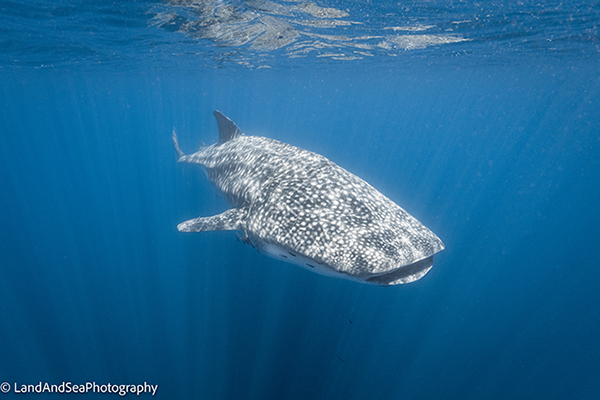
Humpback, Pacific Gray, Blue & Finback Whales
One of the greatest migrations on the planet happens in Baja every winter as thousands of whales migrate to these temperate waters
Many of these whales come to find a mate or to bring new life to our oceans. While there are many species of whales and ocean Mammals that visit Baja on a yearly basis, The humpback whale, the Gray Whale and the Blue whale, are the three largest migrations that visit these waters every year. Baja California is known as one of the best places in the world for whale watching. Our incredible whale watching expedition was created to give you the best opportunity to encounter these whales in a close and personal way.
Each whale species has a different location to spend the winter. The whales have made a significant impact on the culture of each destination we will be visiting.
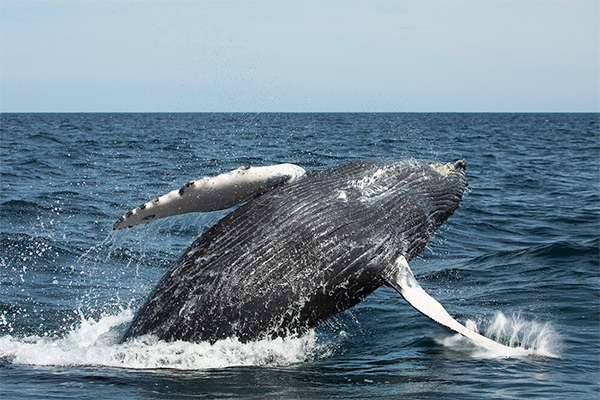
Los Cabos - Humpback whales
Los cabos is the best place in baja to spot the acrobatic humpback whales. Humpback whales are well known for their breaching and singing, both of these behaviors are thought to be related to their mating rituals. Many of the migrating Humpback whales use the shallow bays off the most southern coast of baja to mate and as well as giving birth. During our whale watching tours it is common to see a variety of amazing humpback behaviours. The whales often breach or slap their fins to call attention, males compete with each other in large groups called heat runs and newborn calves learn the ways of the whales from their mothers. The whales are unique in their communication, not only in their body language but their breathtaking singing. With our hydrophone we will try our luck at listening to their unique and mind blowing whale song.
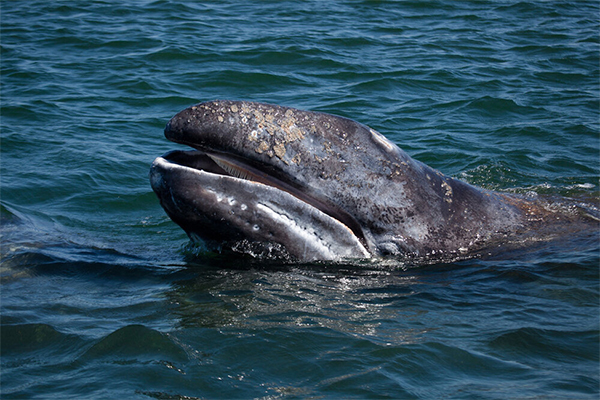
Bahia Magdalena - Gray Whales
Bahia Magdalena is an incredible bay bursting with life. This magnificent bay is one of the favorite places for the Grey whales to arrive after their epic journey. The grey whales spend the summer feeding preparing to embark on the longest whale migration on the planet, swimming close to 6000miles from arctic waters to the beautiful coast of Baja. The behavior we have witnessed of these grey whales is nothing short of extraordinary as they voluntarily come to the boat and lift their head out of the water to look at you. Making eye contact with any whale is something that will stay with you forever. The bay is often full of whales as far as the eye can see with many curious calves making an appearance.
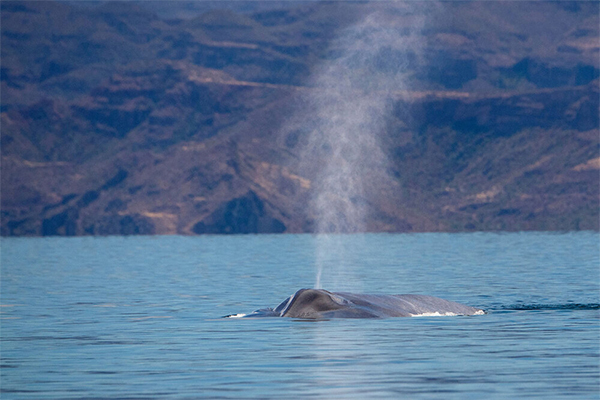
Loreto - Blue Whales
I love this town, picturesque with a vibrant Malecon. Quaint accommodation and tasty restaurants.
From around January through March, many whales make the journey to the Sea of Cortez including: Humpback, Finback, Minke, Sei, Orcas, Pilot and Blue Whales.
Loreto is known for their blue whales. Loreto blue whale sighting are most popular in February and March. The Blue whales are usually patrolling off in the deep waters from Chile to California during the other months. The whales come to Loreto to feed, clave and mate.
The blue whale can reach lengths of 100 feet and is the largest animal that has ever existed. that is right, the blue whale is larger than even the largest dinosaur and you can get close to them in a panga in Loreto.
Loreto National Marine Park is host to the largest animal on the planet, the Blue whale. The Blue whales travel into the sea of Cortez for feeding and reproduction. The blue whale can grow up to 30m in length, as they break the surface of the water they seem never-ending. As we move around in the peaceful waters of Loreto their intense blows, sometimes 5 meters high can be spotted. The blue whales spend a fair amount of time on the surface before lifting their gigantic fluke out of the water and disappearing into the depths.
This is a top side photo safari and we will not be entering the water. However, we will have an opportunity to explore some of the most beautiful areas of Baja in the presence of our favorite Gentle Giants. We may encounter many other species of ocean mammals on our expedition and will always be on the look out for those rare sightings. Some of the other species we may encounter include fin whales, Orcas, and even sperm whales.
Magdalena Bay: Sardine Run & Striped Marlin
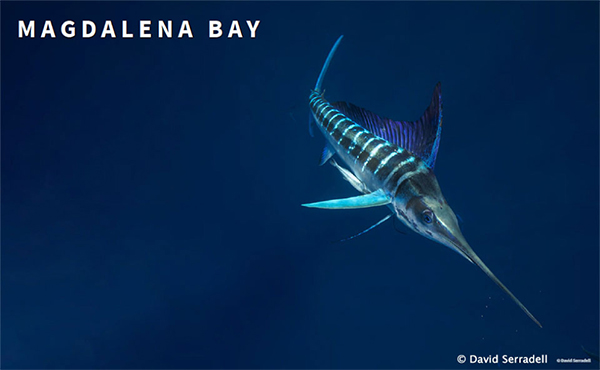
Baja California is home to some of the most incredible animals in the ocean.
The Striped Marlin (Kajikia audax) are a species of pelagic billfish that migrate primarily looking for food. Every year sardines gather in the coastal waters of Bahia Magdalena attracting the Marlins and creating a unique opportunity to observe them as they hunt on the sardine bait balls.
While hunting, the Marlin work together to corral the sardines up to the surface and into tight bait balls. The marlins then take turns darting towards the bait ball, using their long bills to hit, stun and sometimes spear the fish before pivoting back to consume their prey. While they are hunting the marlin flash their bright stripes as a form of communication creating a magical display of animal behavior that we are lucky to witness.
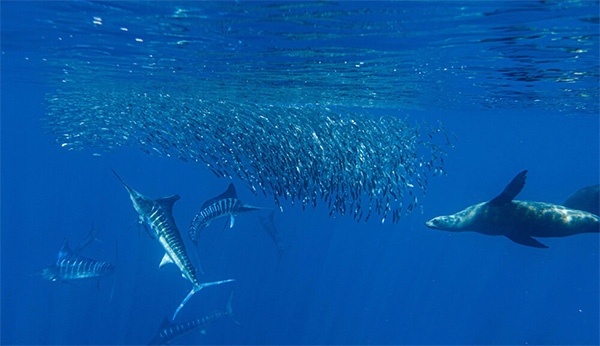
The trip will take place in Magdalena Bay in the lovely town of Puerto San Carlos where we will be based. Every morning at sunrise we will board our boat for the 2 hour trip out of the bay and into the open ocean where the search for the magnificent frigate birds begins. The frigates feed on the sardine bait balls that we are searching for.
Once we find the bait balls things really get interesting. The trip can be fast paced and we will be jumping in and out of the water throughout the day. The bait balls can move fast as they attempt to escape the Marlin. We will be freediving and snorkeling amongst these incredible fish. Sometimes we may find other animals getting in on the bait ball action such as dolphins, sea lions and sometimes even whales.
When in the open ocean, anything can happen. There are plenty of other incredible marine animals we may encountered. In past trips we have even encountered orcas. Magdalena bay is a wonderful place also home to many sea lions, bird island, incredible mangroves as well as beautiful sand dunes and coyotes all of which we will have a chance to experience on our expedition.

